Introduction
The Battle of Hürtgen Forest, fought between September 1944 and February 1945, remains one of the most brutal and strategically complex campaigns of World War II. Located on the German-Belgian border, the Hürtgen Forest saw Allied forces face some of their toughest challenges as they attempted to breach Germany’s western defenses. This was not merely a forested region; it was a carefully fortified area within the Siegfried Line, Germany’s last significant defensive position in the West. For the U.S. Army, especially the brave soldiers of the U.S. Army Rangers, advancing through this dark and dense forested landscape meant navigating unforgiving terrain, relentless German counterattacks, and harsh weather. As the campaign wore on, the battle took a heavy psychological and physical toll on both sides. This article explores the strategic importance of the Hürtgen Forest, the unique combat challenges it posed, and the courageous efforts of the U.S. Army Rangers as they fought to achieve Allied objectives in one of WWII’s most harrowing campaigns.
The Hürtgen Forest: Setting and Strategic Importance
Covering approximately 50 square miles of dense woods and rolling hills, the Hürtgen Forest was a daunting natural barrier that lay between Allied forces and the German heartland. Situated on Germany’s western frontier, its heavy forest cover, sharp ridges, and deep valleys created a natural fortress, one that German forces had strategically reinforced as part of the Siegfried Line. For the Allied forces, capturing the forest was essential to securing the path toward the Rhine River and Germany’s industrial Ruhr region. However, the natural landscape of Hürtgen – combined with seasonal rains and fog that often blanketed the area – presented severe challenges for a large-scale military assault.
From a military perspective, control over the Hürtgen Forest would ensure that German forces could not use it as a staging ground for counterattacks on the Allied right flank as they pushed eastward. Moreover, it would disrupt German defensive positions and create a secure buffer for the Allies as they closed in on Germany. Yet, the very qualities that made the forest strategic – its concealment, terrain features, and difficult access routes – also made it an ideal place for the Germans to mount a powerful and entrenched defense. By reinforcing natural strongholds with bunkers, minefields, and artillery positions hidden deep within the forest, German commanders transformed Hürtgen into a death trap for advancing U.S. forces.
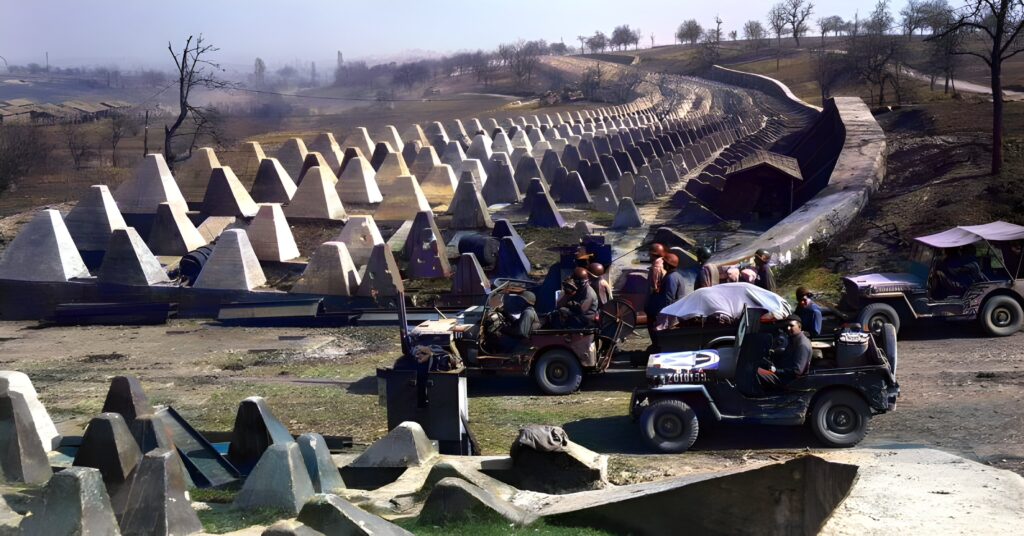
Prelude to Battle: Context of the Allied Advance
As the summer of 1944 drew to a close, Allied forces had made impressive gains across Europe. Having broken out from Normandy, they moved swiftly through France and Belgium, liberating towns and cities while pursuing the retreating German army. However, as they approached the German border, their progress began to slow. Ahead lay the Siegfried Line – a fortified German defensive structure that stretched from Switzerland to the Netherlands. The Siegfried Line, known to the Germans as the Westwall, was a series of bunkers, trenches, and fortified positions designed to delay any advance on the German heartland.
The U.S. First Army, under the command of Lieutenant General Courtney Hodges, faced the daunting task of breaching the Siegfried Line. As part of this, they would need to push through the Hürtgen Forest, a dense and foreboding terrain that would soon become synonymous with hardship and sacrifice. Allied commanders believed that clearing the forest was critical to their strategy. The goal was not only to neutralize the Siegfried Line defenses but also to ensure that German forces could not launch counterattacks against the right flank of the Allied advance. However, the Allies underestimated both the German resolve and the difficult terrain, leading to one of the most grueling battles on the Western Front.
Opposing Forces: U.S. Army vs. German Wehrmacht
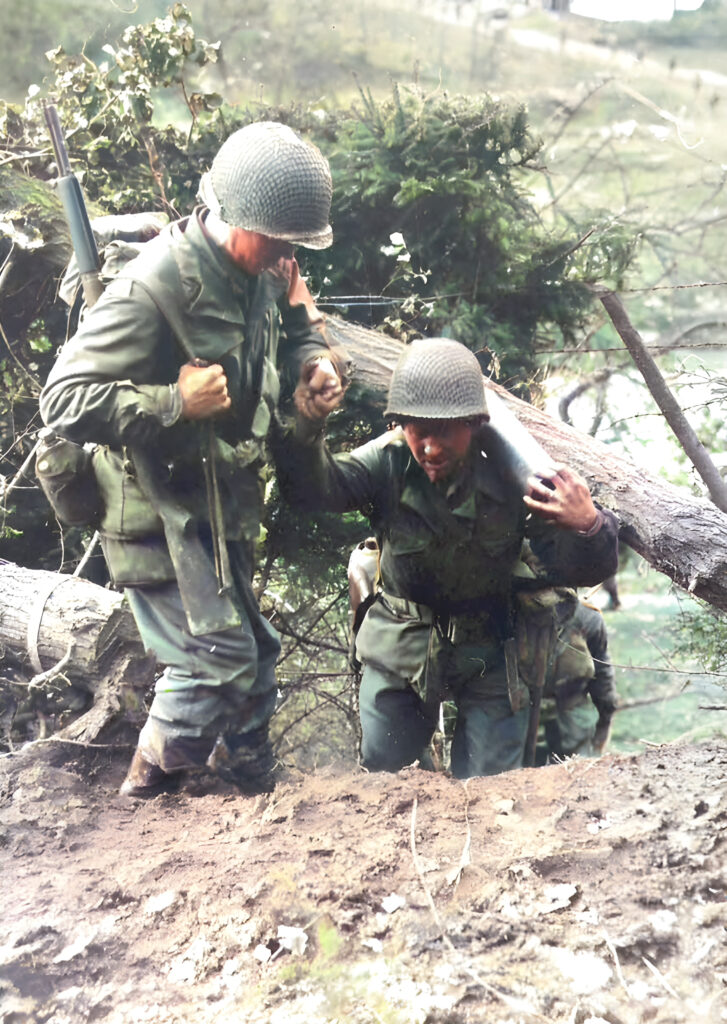
The Battle of Hürtgen Forest was characterized by fierce confrontations between two battle-hardened forces. On one side, the U.S. Army was composed of experienced units, including the 1st, 4th, and 28th Infantry Divisions, as well as specialized Ranger battalions known for their elite assault capabilities. These soldiers had been through the trials of the Normandy landings and the rapid advances through France and Belgium, making them well-versed in combat. Despite their experience, however, they were entering a different type of battlefield in the Hürtgen Forest, where the dense woods and fortified German positions would nullify many of their traditional advantages.
The German forces defending the forest included several key divisions, notably the 275th and 353rd Infantry Divisions. These troops, many of whom were highly trained Volksgrenadier (People’s Grenadier) units, were familiar with the terrain and had fortified their positions, knowing that a defensive strategy could turn the forest into an effective death trap. German commanders understood that if they could hold the U.S. Army in the forest, it would delay the Allies’ approach to the Rhine and buy time for German reinforcements. Thus, even as they endured resource shortages and constant bombardment, the German forces remained a formidable opponent, deeply entrenched and ready to defend their homeland with everything they had.
Initial Advances and Early Stalemates
The initial Allied assault into Hürtgen Forest began in early September 1944, with U.S. infantry units attempting to penetrate the German defenses and push toward the village of Schmidt, a critical target. However, the German resistance was immediate and unyielding, as soldiers within well-camouflaged bunkers and fortified positions rained artillery and machine-gun fire upon the advancing American troops. Every step forward was hard-fought, with the Allies quickly realizing that the forest was filled with minefields, hidden artillery, and an intricate network of defensive positions. Despite the bravery and determination of the U.S. soldiers, progress was slow, and each minor gain came with heavy casualties.
By mid-October, the battle had settled into a grueling stalemate. The Germans counterattacked frequently, using their knowledge of the terrain to launch surprise assaults and inflict significant losses on Allied forces. Moreover, the dense forest canopy and frequent fog prevented effective use of Allied air support, a critical advantage that had previously helped them dominate battles in more open terrain. As the days dragged on, it became evident that the campaign would not be the quick push that Allied commanders had envisioned. Instead, the Hürtgen Forest was turning into a deadly war of attrition, draining the morale and manpower of both sides.
Tactics and Challenges in the Forested Terrain
The Hürtgen Forest’s landscape imposed severe tactical limitations on the advancing Allied forces. With its thick woods, narrow trails, and steep ravines, the forest prevented large formations from moving effectively. Traditional tactics involving heavy armor and coordinated artillery support were almost impossible to execute. Infantry squads were forced to rely on close-range, small-unit tactics, advancing through the forest in lines of communication so restricted that it became difficult to maintain contact with supporting units. The limited visibility and constrained movement routes made it challenging to assess the situation, allowing the Germans to launch devastating counterattacks from hidden positions.
German forces had effectively turned the forest into a defensive labyrinth, utilizing both natural and man-made obstacles to their advantage. Each Allied advance was met with a combination of minefields, tripwire-triggered explosives, and fortified bunkers. The Germans frequently employed “elastic defense” tactics, retreating to secondary lines while inflicting maximum casualties on advancing troops. Every road, path, and clearing was defended with overlapping fields of fire, and German snipers and machine-gunners took full advantage of the forest’s concealment. For the U.S. Army, pushing forward required intense bravery and sacrifice, as every gain was countered by deadly German resistance.
Role and Actions of the U.S. Army Rangers
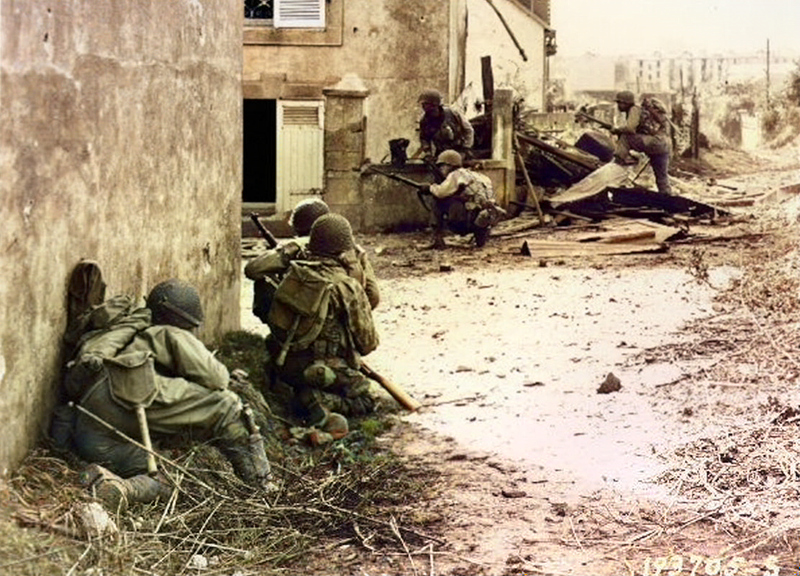
The 2nd and 5th Ranger Battalions were called upon to take on some of the most difficult tasks in the Hürtgen Forest campaign. Known for their specialized training in assault tactics and close-quarters combat, the Rangers were instrumental in tackling the toughest German positions. Deployed to eliminate key strongpoints and create pathways for the larger infantry divisions, the Rangers’ mission was to dismantle German defensive networks while enduring the same harsh conditions that beleaguered the rest of the U.S. Army. Their expertise in stealth, infiltration, and adaptability proved vital in the cramped, chaotic battlegrounds of the forest.
One of the most notable actions involving the Rangers took place on Hill 400, a strategic vantage point that provided artillery observation over the surrounding area. The Rangers faced heavily fortified German defenses on the hill, engaging in hand-to-hand combat and fending off multiple counterattacks. Despite taking severe casualties, they managed to secure Hill 400, marking a critical turning point in the campaign. This accomplishment not only disrupted German artillery operations but also showcased the indomitable spirit and tactical acumen of the Rangers. Their efforts helped to weaken German defenses and allowed the Allies to make incremental gains in the forest.
Key Engagements and Turning Points
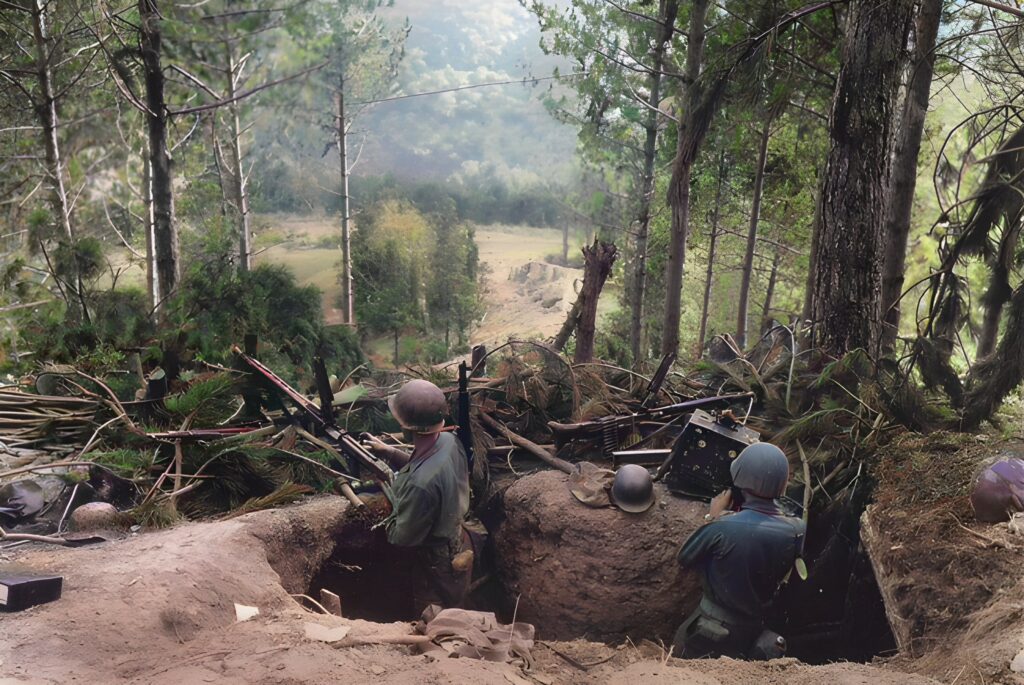
Throughout the Battle of Hürtgen Forest, several engagements highlighted the intensity and difficulty of the campaign. The initial fight for Vossenack was a brutal test of endurance, with U.S. forces encountering fierce artillery bombardments and entrenched German troops. After days of relentless fighting, both sides were left exhausted, with casualties mounting. The struggle for control of Schmidt was similarly grueling. The town’s strategic location made it a high-priority target, but Allied forces struggled to hold their ground amidst repeated German counterattacks that pushed them back.
Hill 400 emerged as a critical point in the battle, as its elevation provided a commanding view of the entire region. The U.S. Army Rangers were tasked with capturing this hill, and their relentless assault eventually succeeded, albeit at a high cost. However, the Germans understood the tactical importance of Hill 400 and launched multiple counterattacks to reclaim it, underscoring the value both sides placed on every inch of ground. The intense fighting for Hill 400 symbolized the costly nature of the Hürtgen campaign, where every victory came at the expense of substantial losses and prolonged suffering.
Weather, Morale, and Battlefield Conditions
As the autumn rains set in, the already difficult conditions in the Hürtgen Forest became even more harrowing. Continuous downpours turned paths into muddy quagmires, complicating the movement of both infantry and vehicles. The thick forest canopy kept the ground damp and prevented it from drying, and soldiers found themselves constantly soaked, cold, and exhausted. The relentless wet weather not only hampered logistical support but also led to a range of health problems, from trench foot to respiratory infections, further weakening the troops.
Morale among the Allied forces began to plummet. Soldiers who had expected a relatively quick advance found themselves trapped in a nightmarish landscape, where every step forward was met with deadly resistance. The psychological toll was immense; the constant artillery barrages, the isolation of the forest, and the seemingly endless casualties left many soldiers feeling demoralized and exhausted. For many, the Hürtgen Forest became synonymous with despair and futility, as they fought an unseen enemy in a battle that seemed to stretch on without end.
Casualties and Psychological Impact on Soldiers
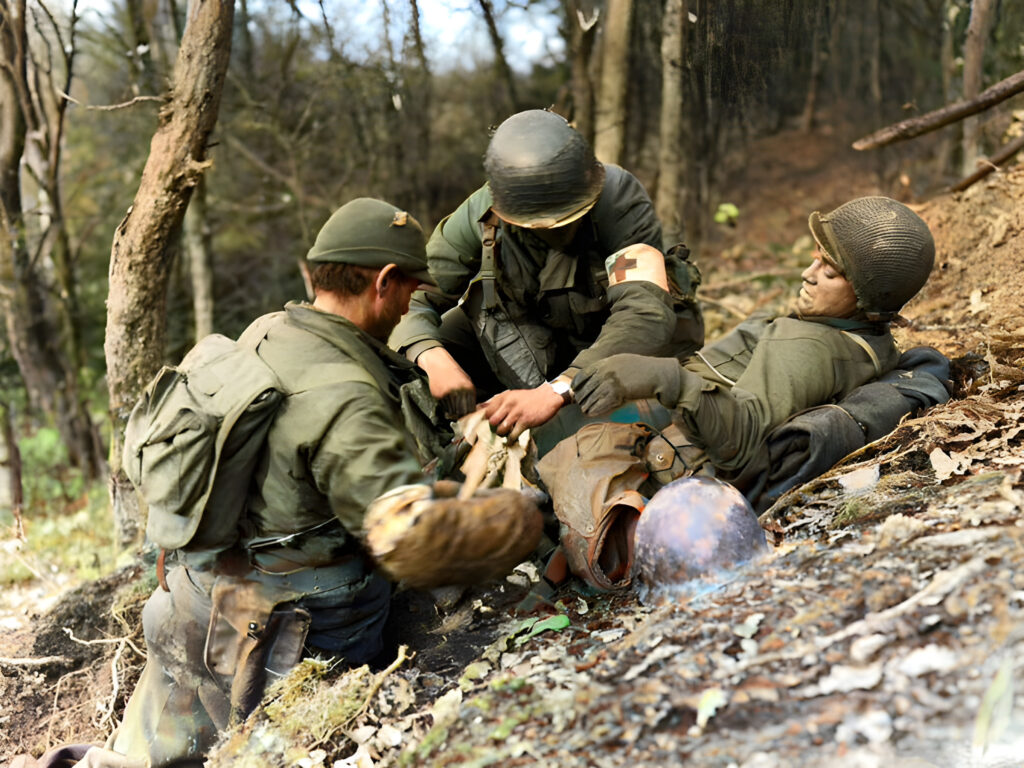
The cost of the Battle of Hürtgen Forest was staggering, both in terms of physical and psychological casualties. For the U.S. Army, the campaign saw an estimated 33,000 casualties, including those killed, wounded, or incapacitated by psychological trauma. Many soldiers were left with lasting mental scars, having endured weeks of brutal close-combat engagements where visibility was limited, and death seemed to come from every direction. The dense forest amplified the intensity of battle, creating a claustrophobic environment where soldiers were constantly under threat, with no safe zones to rest or recover.
The psychological toll of Hürtgen was compounded by the prolonged nature of the campaign. As soldiers cycled in and out of the frontlines, they carried with them stories of horror and suffering, further impacting the morale of incoming units. Cases of “combat fatigue,” now recognized as PTSD, became widespread, as the forest’s dark and oppressive atmosphere heightened fear and anxiety. Even after leaving the battlefield, many survivors continued to experience trauma, haunted by the memories of relentless combat and the loss of their comrades in one of WWII’s most harrowing battlegrounds.
German Reinforcements and Counteroffensive Tactics
German commanders understood the value of the Hürtgen Forest as a defensive stronghold and continually reinforced their positions. With troops from nearby Volksgrenadier divisions and various reinforcements, including artillery and machine-gun units, the Germans were able to maintain a resilient defense. These reinforcements allowed them to conduct regular counterattacks, destabilizing Allied positions and preventing them from consolidating their gains. Each time the Allies made progress, the Germans struck back, demonstrating a level of tactical resilience that defied Allied expectations.
The counterattacks, coupled with the natural defenses provided by the forest, turned the Hürtgen campaign into a deadly war of attrition. German troops fought fiercely, often sacrificing themselves to delay the Allies’ advance, knowing that each day they held the line was another day for Germany to prepare defenses deeper within its borders. For the Allies, every attempt to break through was met with renewed resistance, as German artillery and machine guns inflicted heavy casualties, reinforcing the impression that the Hürtgen Forest was an impregnable barrier.
Aftermath and Tactical Outcomes of the Hürtgen Campaign
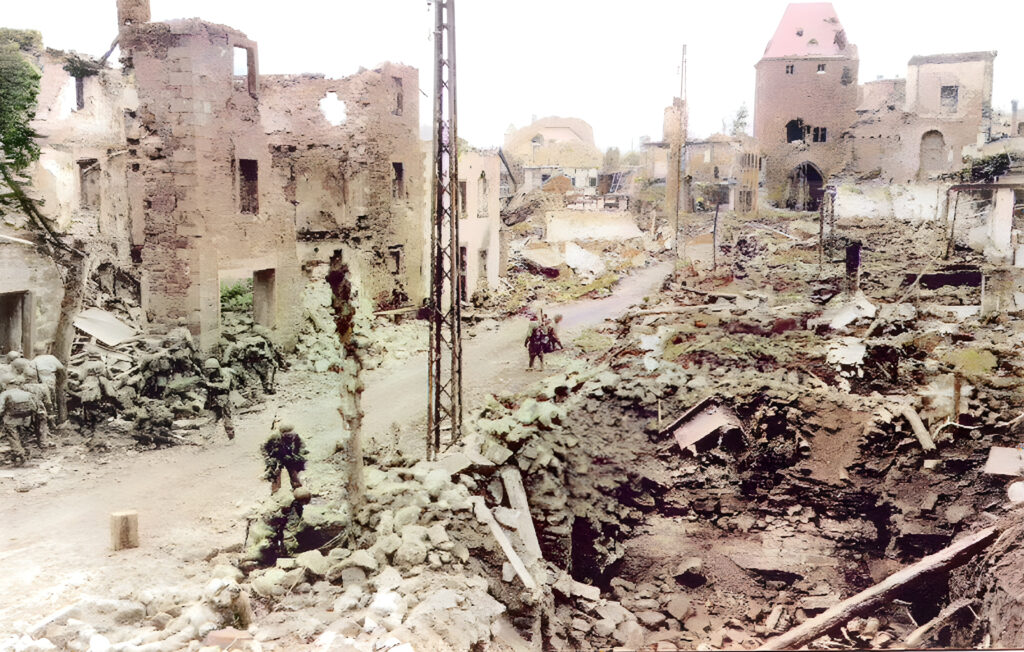
The aftermath of the Battle of Hürtgen Forest left both sides physically and mentally exhausted. For the Allies, the campaign had come at a tremendous cost, and although they eventually took control of the forest, the strategic value of the victory was limited. The prolonged battle had drained manpower and resources, and the Allies were unable to prevent the Germans from launching their counteroffensive in the Ardennes, an event that would become known as the Battle of the Bulge.
The Hürtgen campaign taught military strategists several valuable lessons about the complexities of forest warfare, attrition, and the need for adaptability in tactics. The high casualty rates and morale challenges that the Allies faced underscored the importance of evaluating terrain and enemy fortifications before launching an assault. As a symbol of the horrors of war, the Hürtgen Forest remains a poignant reminder of the costs of underestimating the challenges posed by entrenched and well-prepared defenders.
Legacy of the Battle of Hürtgen Forest
Today, the Hürtgen Forest stands as a solemn reminder of the sacrifices made by both American and German soldiers. Memorials dot the landscape, and cemeteries pay tribute to the thousands who lost their lives in this harsh and unforgiving environment. The battle has become a focal point for historians and military analysts, who study its events to understand the impact of terrain on military strategy and the psychological toll of prolonged combat.
For veterans who survived the battle, the Hürtgen Forest remains one of the most vivid and haunting memories of the war. The campaign is often remembered as a “forgotten battle,” overshadowed by more prominent events like the Battle of the Bulge, yet it holds a unique place in WWII history. The battle’s legacy endures not only as a symbol of courage and resilience but also as a testament to the enduring lessons of warfare in difficult terrain and the human cost of strategic miscalculations.
Conclusion
The Battle of Hürtgen Forest is remembered as one of WWII’s most grueling campaigns. The bravery of the U.S. Army, including the elite Rangers, stands as a testament to the determination and sacrifice of soldiers who fought under some of the most challenging conditions imaginable. Although the campaign did not yield the strategic victory that Allied commanders had hoped for, it revealed the formidable obstacles posed by fortified terrain and entrenched defenses. The story of Hürtgen Forest remains a powerful reminder of the resilience of the human spirit in the face of overwhelming adversity and the complexities of modern warfare.

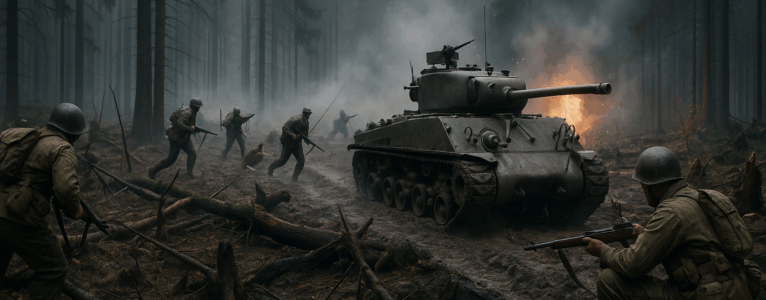
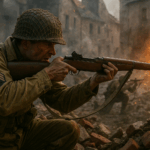
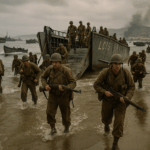
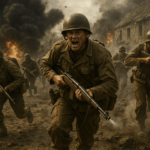
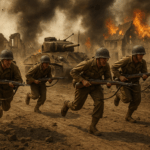
The beauty of your writing lies not only in the clarity of your ideas but in the way you allow those ideas to breathe and grow. Each sentence feels like a step forward, yet it’s not rushed. There’s time to pause and reflect between the lines, and in that space, the words take on a life of their own. It’s rare to find writing that feels so alive.
Thanks man, really appreciate it !